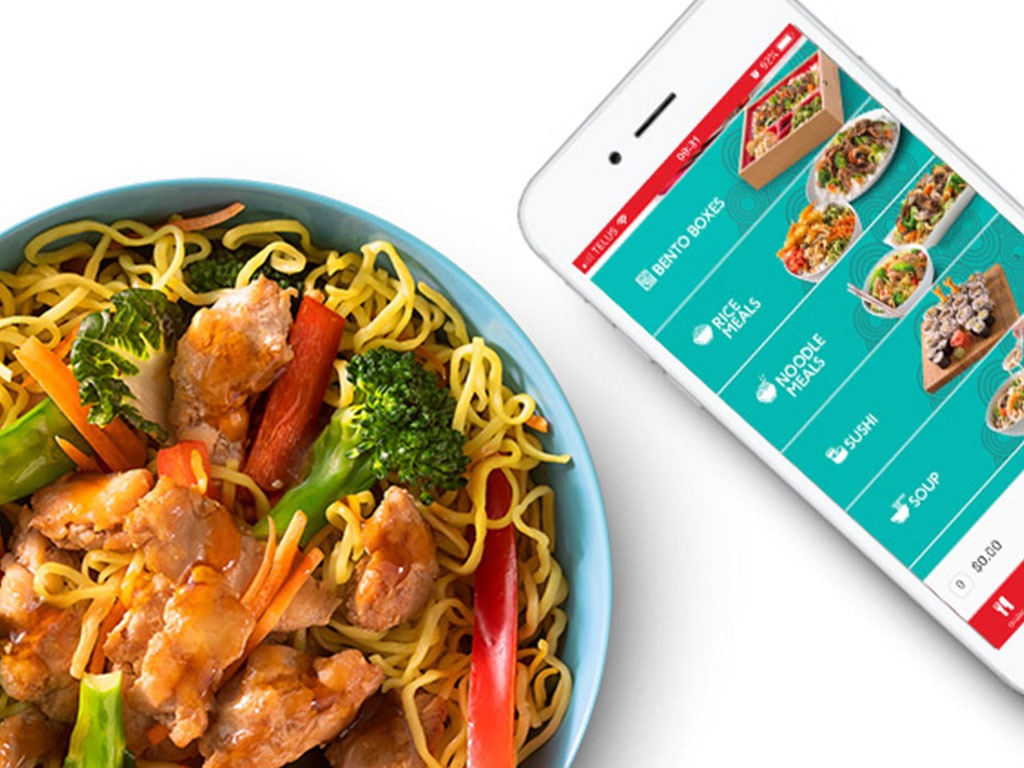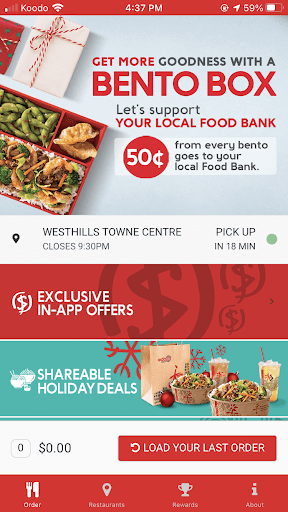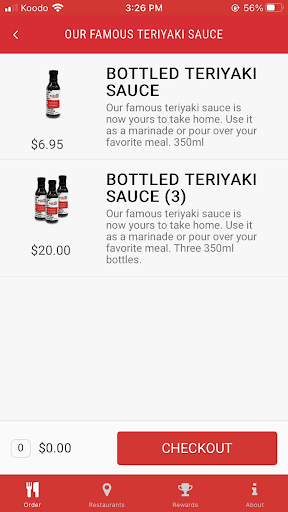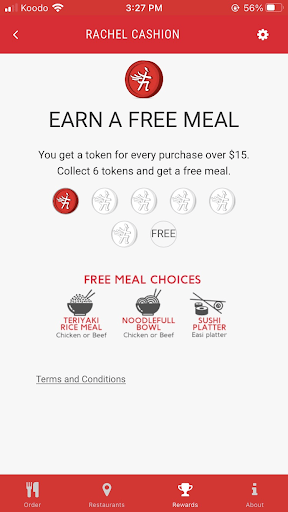A Highlight of 2020: Edo Japan and App Campaigns
2020 has been quite the year. I think I can safely say that it has been a difficult time for many of us. However, there have been some bright spots too, and those are worth celebrating. We’ve been lucky enough at Vovia to have had a few of those this year! At the beginning of this year, we had the pleasure to start working with Edo Japan, a Japanese-inspired quick service restaurant founded in Calgary, AB. Since first opening in 1979, the brand has expanded considerably, with more than 145 locations across BC, AB, SK, MB, ON and QC. Like so many businesses, Edo faced new challenges in 2020, but this year has also provided an opportunity for them to focus on My Edo App, an online and mobile ordering platform Edo developed to better serve its customers and extend the dining experience past the restaurant. In the latter half of this year, we’ve worked with Edo on growing their app and online ordering user base, as well as gaining a deeper understanding of the user experience to inform marketing and media strategies.

The Changing Times
Many of us use apps to order from quick service restaurants, and for good reason. They often feature exclusive perks such as a loyalty or rewards program, offers, and/or menu options. App ordering also includes the added convenience of not having to wait in line to order, and pre-pay options which allow customers to pick up their food quickly. Unsurprisingly, the pandemic has magnified the value of the advantages that come with adopting a mobile ordering platform and have provided a means for Edo Japan and other QSRs to adapt to changing consumer behaviours and gain a competitive edge.
Consumer demand for contactless or frictionless options has meant businesses have had to develop options for customers to order, pay for and pick-up their meal while minimizing the amount of person-to-person interaction. At the same time, customers can still be motivated by a good deal, especially during a time when many are watching their spending and focused on value. Apps like Edo’s offer customers the opportunity to save by taking advantage of app-exclusive deals. The result is a stronger relationship with that customer, who is more likely to keep you top of mind when looking to eat out (or order for pick-up/takeout, as the case may be).
Mobile apps also allow QSRs to tap into other coveted audiences: millennials and Gen Z. These age groups are more likely to use a smartphone or tablet, and a February 2019 survey from Restaurants Canada and BrandSpark found that almost half of these users used their mobile device when ordering for pickup (46%) or delivery (44%).
And let’s not forget the impact that the pandemic has had on shifting consumer habits. Older generations such as boomers (those aged 56 – 74 right now), have increased their online spending since social distancing and other safety measures were introduced in response to the pandemic. This audience may soon shift to increased mobile app use too.
My Edo App
Since Edo launched My Edo App in 2019, the app was already a reliable tool for their customers looking for contactless options and a solution that allowed them to limit their time in-store during the first wave of the pandemic. The app continues to be a key option for Edo customers (especially now, as many parts of the country are under new restrictions). My Edo App offers existing customers a new way to order and experience Edo, while also attracting new customers who are motivated by the app’s advantages which allow them to pre-order, with quick pickup.
While enticing users to download and install your app is just the first hurdle; encouraging continued use can be trickier. In-app offers and rewards are significant aspects of My Edo App, and will continue to be a key part in our strategy as we move into 2021 and beyond, as they can help not only incentivize app installs, but also encourage both customers loyalty and habitual use of the app itself.
An app also presents another avenue to serve customers outside of the traditional restaurant environment – something that is especially helpful right now amid the COVID pandemic. Edo just launched its famous Teriyaki Sauce by the bottle, transforming its signature sauce into a pantry staple for fans who can’t get enough scoops on their Edo meal.
While delivery service providers, such as SkipTheDishes and Door Dash, have apps which allow users to order delivery from a variety of restaurants, involving this third-party can disrupt the user experience because of the risk of food arriving soggy or cold, something McDonalds encountered. For QSRs like Edo Japan, developing a proprietary app has allowed the brand to oversee and safeguard the online ordering experience from start to finish, ensuring the best possible customer experience
App – Focused Paid Media Campaigns
It’s clear that having a proprietary app is valuable in the QSR landscape, but it’s also important to market and build awareness for it, then use these campaigns to learn how users are interacting with it. From a media and marketing intelligence perspective, app campaigns offer a number of opportunities for new paid channels, new executions in ‘usual’ channels, and a new way to learn about your customer.
There are a number of digital channels that have specific campaign tactics built for apps. These campaigns can be used to drive app installs and even actions within the app itself. To name a few, here are a few channels we’ve used in the past for these objectives:
- Facebook and Instagram app campaigns
- Google Universal App Campaigns
- Third party partners like Native Touch
The measures of success for these campaigns will look different than digital campaigns you might run to your website. For install campaigns, cost per install is the primary KPI, with campaigns being optimized to find efficiencies on improving the cost per install over the course of the campaign. For actions within the app itself, we’d be measuring cost per conversion, with those conversion points being defined based on the actions we can track within the app itself. And that takes us to the next big piece – learning about your app customer through app marketing intelligence.
Tracking and Reporting within Apps
If you work in marketing in some capacity, chances are you are familiar with Google Analytics. GA is widely used for measuring website performance and the paid digital campaigns driving to websites. Apps are different though and require a different measurement and tracking approach. For Edo’s My Edo App, we use Kochava, a mobile app analytics and attribution platform. Kochava works by embedding a code (done by the app developer) within the app code that contains a unique identifier for your account. Then, once your account is set up and the code is placed, approved by the app stores and live, within the Kochava dashboard you can see how users are engaging with your app. This also allows us to create unique links based on the channels we’re using, that allows us to link the paid digital ads to the app.
This is attribution and very important to help us understand which channels are driving the desired action (like an install or purchasing a specific item in app) and at what costs. Tracking within apps therefore not only helps us understand what channels are driving actions, but also which are the most efficient, and how people are interacting with the app. It’s a wealth of information that allows us to make more informed decisions.
Here’s to the New Year
There is less than a month left in this year and lots of us are excited to put it in the rearview mirror. I’m personally hopeful that 2021 brings with it more positives than negatives and hopefully a world emerging from a pandemic instead of living in the midst of it. Either way, businesses will continue to adapt and evolve to the changing times, like always, and we’ll be happy to join our clients for that ride.


